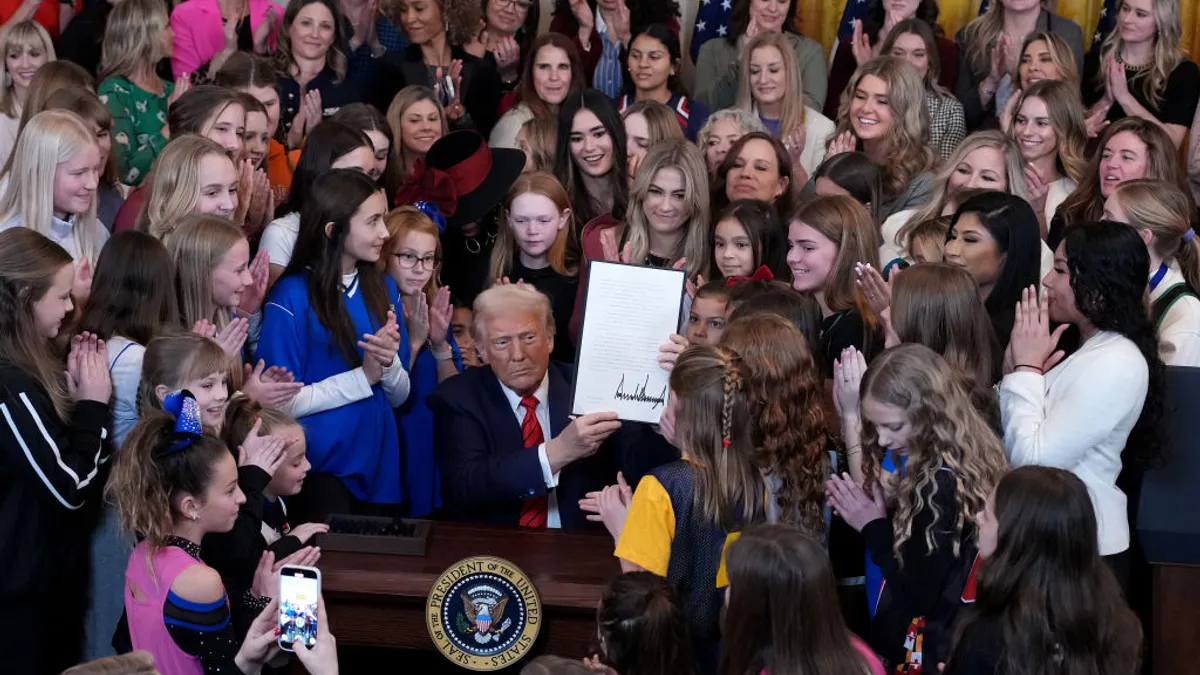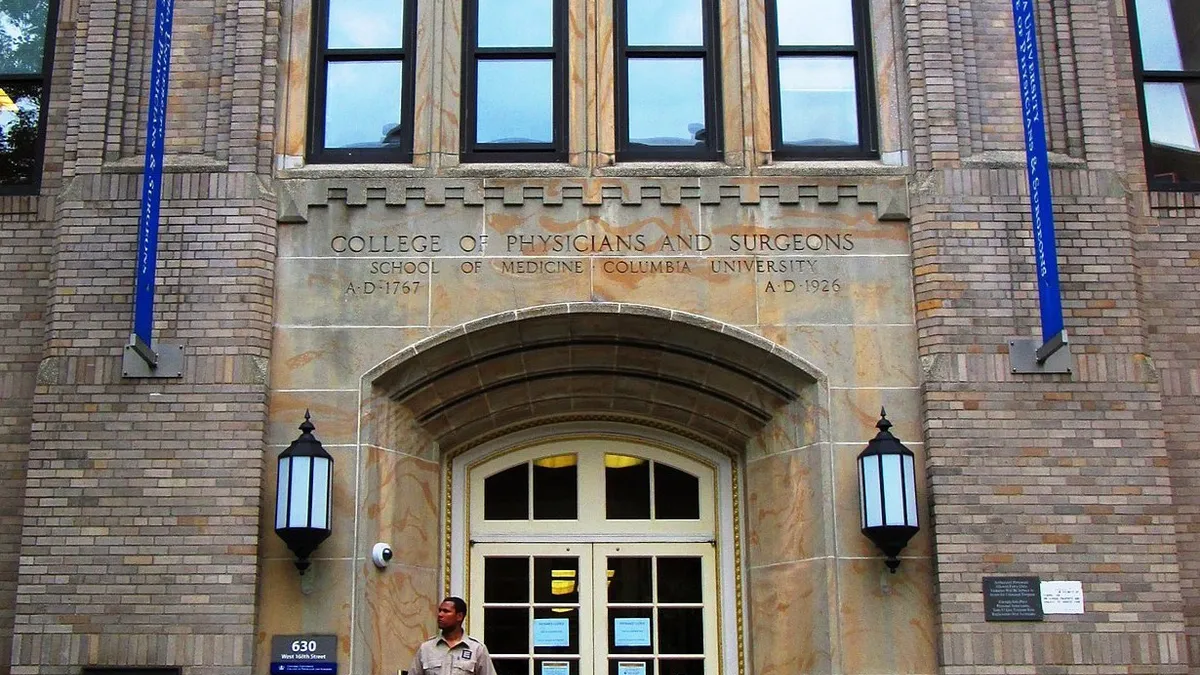Dive Brief:
- Many colleges are seeking growth from graduate and adult education in the face of a shrinking number of undergraduate students, but those are competitive markets facing their own projected enrollment decreases, according to a new report from consultancy EAB.
- Almost all presidents, cabinet members, provosts and enrollment management vice presidents who took part in a small survey said increasing graduate and adult enrollment is a priority at their institutions. Every president and provost ranked it as a moderate or significant priority, as did 91% of the enrollment management leaders.
- Just over half of those surveyed said the enrollment goals for their graduate and adult programs are higher now than they were at the beginning of the pandemic. A similar share, 56%, said they've increased the number of programs they offer in adult and graduate education since the spring 2020 term.
Dive Insight:
In most years since the start of the Great Recession, graduate enrollment grew across the country as the job market struggled to find its footing and distance education expanded. From 2007 to 2020, master's and doctoral enrollment grew annually in all but three years, according to federal data EAB compiled.
Graduate enrollment jumped sharply in 2020 amid the pandemic’s early disruptions. However, National Student Clearinghouse Research Center estimates show graduate enrollment declined in 2021 and 2022.
Overall graduate and adult enrollment is still higher than before the pandemic, EAB said. But the consultancy concluded it's becoming more challenging to compete in the space — even as that market has grown more important for many colleges.
EAB surveyed 64 higher ed leaders this summer, most at master's-granting institutions and those with a high level of research activity. Over half of the institutions represented had fewer than 5,000 students.
Survey respondents didn't rely heavily on tuition dollars from programs for graduate and adult students — those programs contributed less than 20% of net tuition revenue for almost 6 in 10 respondents. But undergraduate enrollment shortfalls are placing more pressure on graduate programs to grow, EAB found.
Respondents split between being lightly and heavily invested in online grad programs. About 4 in 10 said less than 25% of their programs are available online, and 1 in 3 said they offer over 75% of their programs online.
Online growth is a priority. Over 80% of respondents named expanding online enrollment and offerings as a high or moderate priority. Just 16% said expanding hybrid or low-residency options is a high priority.
EAB asked leaders to name as many as three types of programs they think can grow. Top answers were allied health, cited by 60.9% of respondents, business, cited by 54.7%, and nursing, cited by 45.3%.
Meanwhile, college leaders say they struggle to set realistic enrollment goals because of the pandemic. Four in 10 survey respondents said setting reasonable enrollment goals was the most difficult aspect of operations for their graduate and adult programs.
Top barriers to growing online enrollment include competition from large institutions that operate primarily online, budget limitations, lack of buy-in from faculty, and limited support services for students who study online, according to survey respondents.
Despite buzz about competition from alternative education providers, college leaders aren't particularly worried about the likes of Google elbowing them out of the space. Only 10.6% said competition from non-university providers is a top factor blocking their own enrollment growth. For comparison, 54.5% said the same about competition from other universities.
Staffing also poses a challenge. Six in 10 respondents said staffing levels have not changed in graduate and adult education since 2020.
Where, exactly, graduate and adult programs slot into organizational charts differs greatly between institutions. That makes it difficult to benchmark key indicators like staffing levels and resources allocated.
The top executive for graduate and adult programs reports to the provost at 56.1% of institutions. That position reports to the president at 27.3% of institutions and a vice or associate provost at 7.6% of institutions. Presidents were frequently overseeing graduate and adult programs at private institutions, EAB found.
"Organizational challenges remain a common hurdle," EAB's report said. "Survey respondents who work at public institutions disproportionately identified 'coordinating efforts across the institution' and 'lack of clear leadership for graduate and adult-serving programs' as top challenges."















